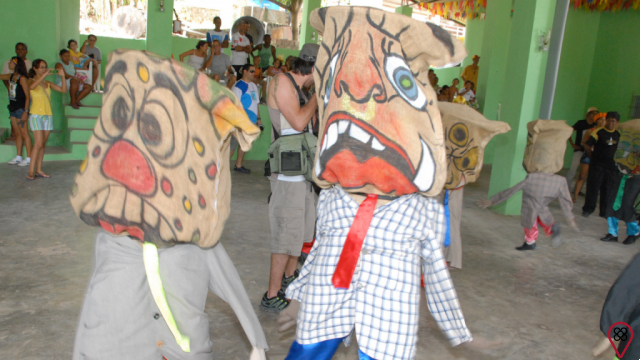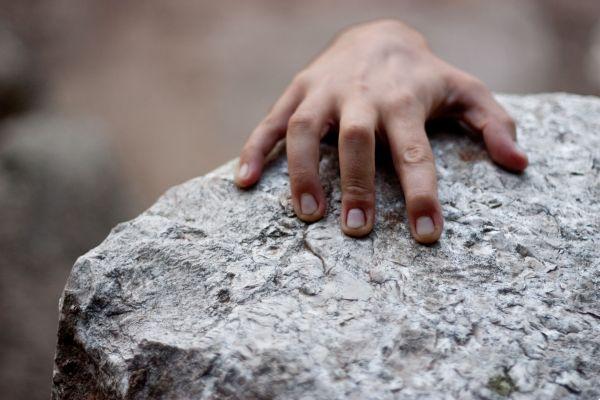Joking between friends is normal. Football generates many jokes. Call, send messages, make the other wear the rival team's shirt. Personality traits are also laughable. The clumsy friend, the too skinny friend, the too shy friend. Longtime friends are free to speak their minds, pull their ears and make jokes. Still, common sense is needed. Not always the other will take things in a good way. Sometimes the person is in a bad day or phase. What was supposed to be a joke turns into an insult. The weather gets bad, friends go a few days without speaking, but a sincere conversation solves the situation.
But what happens when the joke goes too far? A seemingly harmless nickname, for example, generates embarrassing and mean comments generate suffering. This situation is known as bullying. The term in English comes from the word bully and means bully, bully. The word has no English translation. Bullying is humiliation, oppression, intimidation, physical aggression and in extreme cases, death threats. It is the type of violence that is gaining strength worldwide, says educator Cléo Fante, author of the book Bullying Phenomenon: How to Prevent Violence in Schools and Educate for Peace.
The situation has always existed, but the first to associate the term with violence was Dan Olweus, a professor at the University of Norway in the 70s. Bullying is something very serious. However, not everything can be considered as such. To be considered bullying, aggression must have the following characteristics:
- The author intends to hurt his target
- Aggression being in public and having the agreement of this
- Aggression must be constant
victim profile
Individual without self-esteem, without friends and, when children or adolescents prefer the company of adults. Victims are fragile looking, speak very softly and some stutter. The reason for the humiliations comes from intolerance. Anyone who is not up to standard suffers the consequences. Bullying cases are associated with:
- Have high school performance
- Being too tall or too short
- Being too thin or too fat
- Use glasses
- have big ears
- Wearing out of fashion clothes
- Be poor
- being new at school
- have a disability
- Follow a different religion
- sexual option
How to recognize?

The life of a bullied person is torture. The victim becomes even more shy, cries constantly, and becomes even more withdrawn. Parents should be aware of sudden changes in behavior. The child or adolescent shows the following signs:
- Ask to study in another class
- want to change schools
- Drop in school performance
- want to stop studying
- Go back to bed wetting
- Insomnia
- Headache and stomachache
- Eating disorders
- Gastritis
- Ulcer
Faced with these signs, parents need to talk to their child. Ignoring and classifying complaints as freshness exacerbates the situation. Before bringing the problem to the attention of the school, it is necessary to ask some questions. See what they are according to the book Protect Your Child from Bullying, written by Allan L. Beane:
- Who was involved?
- Do you know the abuser?
- What did they say to you?
- When happened?
- Where were you?
- Was there an adult around?
- Did you react? If yes, what did you do?
- How long has this been happening?
The teacher plays an important role in this mission. Pretending that nothing is happening strengthens the aggressor. Thinking it's an “innocent joke” and laughing is also an omission. Although joking among classmates is common, the teacher should pay attention to the victim's reaction. When a student reports bullying or any other uncomfortable situation, the case must be referred immediately to the school board. If the institution folds its arms, the recommended thing is to change the child from school.
In extreme cases, the family must file a police report.
Educational measures to tackle bullying

- Provide a favorable environment for communication between students, teachers and management.
- Meetings between faculty and management in the elaboration of measures against bullying. Staff can ask educators and psychologists for help.
- Talk about the importance of generosity, solidarity and tolerance.
- Carrying out activities on the above subjects, research and theater plays are options to raise awareness among students.
- Discuss bullying in the classroom, if possible with the participation of psychologists.
- Talk to parents and warn them that they can be held accountable for their children's actions.
What drives someone to bully?
Bullies (those who bully) don't obey rules, provoke fights and demand that they satisfy their wants immediately. They want to get attention. Telling yourself how brave you are, being approved and popular in the group are the goals. This behavior appears even in preschool. This phase is marked by insecurity, difficulties to fit in, aggressive and dominating attitudes. The nuances intensify over time. Racial, social and sexual orientation prejudice are common characteristics of bullies. Some scholars argue that aggressors have problems with self-esteem, envy and resentment. We can say that bullies recognize themselves in their victims and attack with the intention of strengthening their image.
The aggressor also suffers consequences. Without psychological intervention, he may have depression and ODD (oppositional-defiant disorder). TOD is characterized by disobedience and hostile attitudes. The patient loses control when he sees that his wishes have not been met. The disorder affects 2 to 16% of children and adolescents. During childhood, the disorder affects more boys. In adolescence it affects both sexes. The disorder can also affect adults, but is less common. For the diagnosis to be confirmed, the presence of four symptoms for approximately six months is necessary. We list the main symptoms of ODD.
- Frequent use of obscene language
- Blaming others for your bad behavior
- Having the pleasure of pissing people off
- Anger, rancor and feeling of revenge
Cyberbullying

Bullying transcends school walls. Cyberbullying is aggression practiced via email, websites, and especially social networks and messaging apps. The danger here is the anonymity provided by the technology. The aggressor feels that he can never be identified and the practice becomes even more cruel. The attacks are divided between messages and photos. Girls comment on other girls' looks, spread rumors about their behavior, always linked to dating. Boys question the sexuality of others. Prejudices and death threats are also part of this world.
Faculty and directors need to be up to date on the subject. Activities aimed at the responsible use of the internet, consequences of those who spread offenses on the network are measures that every school should adopt. Cyberbullying must also be reported to the school. More serious cases need to be reported. In this case, parents take the following measures:
- Save and print the pages with the aggressions
- Request the site to take down the pages with the offenses
The spectator also attacks

Whoever supplies ammunition helps the assassin. Anyone who watches someone practice bullying also attacks. The spectator does not prevent the violence. Witnessing the act without doing anything is giving the go-ahead for the aggressor to continue torturing his victim. The spectator shouts words of encouragement, reinforces curses and helps with physical aggression. However, it should be noted that in some cases, the spectator's passivity is caused by fear of reprisals. Still, the “audience” is far from a victim. Despite her fear, she also takes pleasure in watching the victim suffer.
When the aggressor is a minor, the parents are framed in article 932 of the Civil Code. The article confers “civil liability for the act of a third party”, or in the words of the jurists “indirect civil liability”.
In the state of Rio de Janeiro, public and private schools are obliged to take cases of bullying to the police. Anyone who disobeys pays a fine of up to 20 minimum wages. In Santa Catarina, the state law nº 14.651 “Program to Combat Bullying”. The law promotes interdisciplinary actions to combat aggression.
What Bullying Does to the Brain

Bullying changes the chemical makeup of the brain. Researchers at Rockefeller University (United States) analyzed the behavior of rats exposed to a situation of emotional stress.
The researchers put a mouse in a cage with larger, older mice. The animals were changed every ten days. Rats defend their territories with violence. The mouse that arrived last lost the fight. After the conflict, the mice were separated. The loser could still see and smell the others, potentiating the stress.
Scientists noticed changes in the center of the prefrontal cortex, the brain region responsible for social and emotional behavior. Because of this, the animals showed great sensitivity to vasopressin. The hormone also acts as a neurotransmitter. Vasopressin is linked to anxiety, depression and aggression. The higher the level of this hormone/neurotransmitter, the more intense these characteristics are. Researchers still don't know how long the effects of bullying on the brain last.
bullying and suicide

Bullying and cyberbullying can come to a tragic end. So it was with American teenager Amanda Todd. It all started in 2012 in a chat room. Amanda, 12 years old, was convinced to show her body. A year later, Amanda received a Facebook threat. It was a person who chatted with her. The person demanded a "show" not to disclose screen prints to the girl's family and friends. The criminal knew the school, the friends, where he spent his holidays and started to stalk the girl. The person carried out his threat. The photos were sent and Amanda started using licit and illicit drugs. The young woman also suffered from depression and panic disorder.
A new blow came a year after the photos were leaked. The criminal created a Facebook page. The teenager's breasts were in the profile picture. In the video she made of her suffering, Amanda revealed “I cried all night, I lost all my friends and their respect”. The young woman began to mutilate herself. Changing schools exacerbated what was already terrible. She got involved with an older boy. The guy's girlfriend and 15 other girls went to the school to get satisfaction. Amanda was beaten and left on the floor. After the episode, the teenager took bleach. When she got out of the hospital she got messages like "She deserves it!" and "I hope she dies!" Six months later, the girl received pictures of bleach and cleaning products. Amanda took a dose of antidepressants. Her body was found a week later. The 15-year-old girl hanged herself.
Bullying is an act of cowardice. The abuser humiliates and physically assaults to show superiority. Those who need it to be stronger are also lacking in self-esteem. Those who suffer this violence have their lives transformed. School becomes a place to be avoided. The despair is so great that the victim has a headache, stomachache and even vomits.
Many parents do not realize their children's suffering. They think that the appeals to change schools is a child/adolescent whim. Teachers don't always know how to deal with bullying. Some simply ignore the fact. Others get to the point of laughing at the situation. When they receive complaints of aggression, they tell the student to “let it go”.
The matter deserves full attention. Bullying affects school performance and causes trauma that can accompany the victim's life. If you are the target of humiliation, tell your parents and tell a teacher you trust. Parents, please take your children's pain seriously. Teachers and principals, talk to the students involved and the parents of the aggressors.
- Why do we need to take care of those who bully?
- A Reflection on Bullying Everyone Should Do
- Learn about the method of combating bullying called KIVa
- Bullying: violence is among us
- World Anti-Bullying Day
- Break the cycle of bullying through love
Respect for the suffering of others, dialogue and punishments fight bullying. Preventive measures at school, such as discussions about the damage caused, the legal consequences, actions on the responsible use of the internet must be included in the curriculum of schools. At home, parents also provide guidance and, when identifying an aggressor, I have a duty to inform the school.
Crossed arms and blindness reinforce the violence. It's in our hands to avoid tragic endings like that of young Amanda Todd.

























